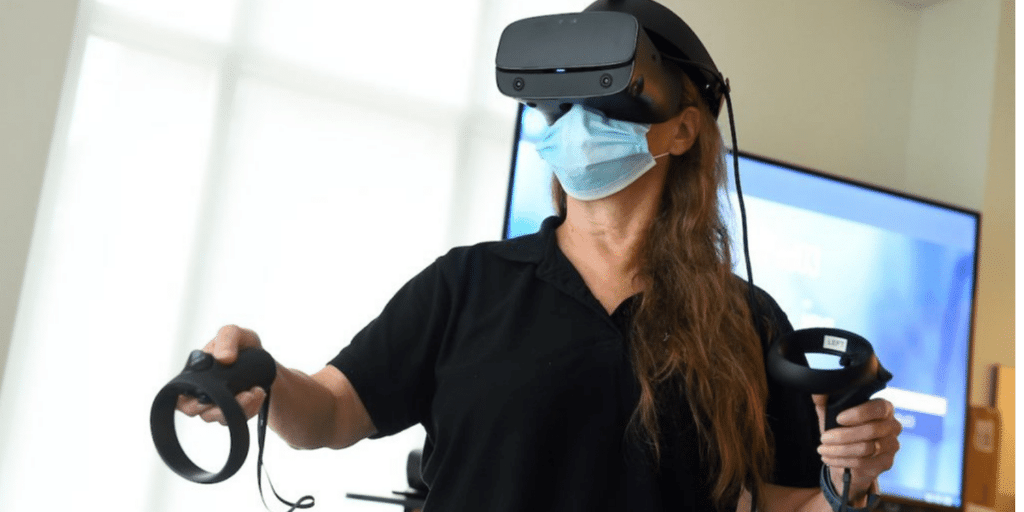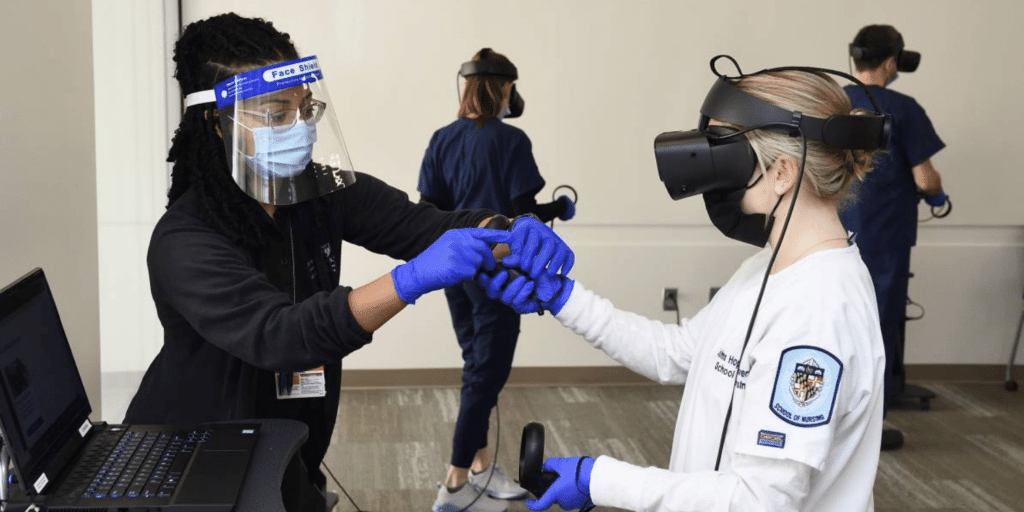Can you imagine a world where to learn, you must put lives at risk?
Though it seems unfathomable now, this was the reality not too long ago. Historically, doctors and nurses used to learn in lectures – then be released onto the wards to practice on patients, learning from their mistakes as they delivered care — mistakes that could put patients’ lives in danger.
Over time, an increasing focus on patient safety spurred the development of physical simulation – the techniques around practicing with manikins and actors. Simulation allowed clinicians to learn from their mistakes safely, and has been widely adopted over time.
Despite this, the healthcare industry faces a problem: medical error is costing patients their lives, being reported as the third leading cause of death in hospitals, behind only cancer and cardiovascular disease.
In the US, despite a nearly $3 billion annual investment from Medicare towards direct graduate medical education, new resident doctors are responsible for 81% of malpractice claims. And error is not confined to doctors. Fifty percent of entry-level nurses are involved in practice errors, and only 23% of nurses graduate feeling prepared for practice.
Essentially, students and healthcare professionals need more opportunities to build confidence and competence allowing them to perform at their best the moment they set foot on the clinical floor.
So how do we create more opportunities to practice in simulation, in a way that’s realistic, repeatable, and available whenever and wherever it’s needed?
Say hello to virtual reality! Here’s why VR is ideal for training well-prepared staff and improving patient care at every step.

Immersive, experiential learning
It makes me feel like I am dealing with real patients. However, I'm not afraid of making mistakes and this has increased my confidence and practical skills.
Nursing student using OMS
Experiential learning enables users to carry their learning into the real world long after a simulation ends. This means healthcare workers are more equipped and confident to deal with any obstacle they face. In virtual reality, the benefits of experiential learning are remarkable. Research shows VR simulation not only improves performance across medical professions — it also significantly decreases the chance of fatal errors.
At OMS, we authentically replicate real-world clinical experiences, allowing learners to get the most out of their experience. Our AI-driven patients are dynamic and adaptive, deteriorating if they don’t receive appropriate (and timely) treatment. Learners can prepare for the realities of patient care while honing their ability to recognize symptoms.
Train anytime, anywhere
VR provides true scalability. It’s up to 20 times cheaper than manikin-based training, requires no patient or faculty involvement, and the hardware is easily storable when not in use.
Once it’s up and running, VR simulation software is available to use 24/7. Learners are free to tailor their learning around their schedules, which is a bonus for busy practitioners with limited time to spare.
Standardized VR simulation scenarios provide an infinitely repeatable learning experience. Scenarios unfold differently depending on how a learner engages with a patient, with no risk to the patient no matter what the learner does. This means that learners can make mistakes safely and without anxiety until they are confident in a scenario.
Developing this confidence is crucial to creating independent, capable healthcare staff. A 2020 report highlighted poor clinical decision-making as a factor in 65% of entry-level nurse errors; it also found that just one-third of graduate nurses are confident in their practice.
The good news is that VR simulation scenarios can significantly improve knowledge retention and self-confidence in learners, which diminishes the likelihood of medical error.
The ability for our nursing students to practice standardized, realistic clinical scenarios whenever they need is game-changing.
Executive Director of Simulation, NYU Rory Meyers College of Nursing
Personalized learning for each user
Students, trainees, and experienced professionals all have different requirements and expectations of training. Unfortunately, traditional methods make it difficult to create programs that acknowledge each learner’s individual needs.
Here’s some good news: no matter the career stage or specialization, virtual reality can train healthcare professionals in ways that work best for them.
With its combination of visual, auditory, and kinaesthetic input, VR can accommodate a range of individual learning styles. On-demand access also means learners can choose where and when they prefer to practice, providing even more customized learning.
With VR simulation, users have an extensive library of scenarios at their fingertips. A wide range of scenarios gives learners the choice to focus on specific areas of expertise or refine their general patient care. If learners vary in confidence across topics, that’s not an issue. They can repeat scenarios as little or as often as they need before they put their skills into practice.
Looking to understand the strengths and weaknesses of specific users? Leading VR simulation platforms, such as OMS, offer comprehensive analytics tracking for this reason. It’s ideal for monitoring participant performance and tailoring learning based on concrete results. It also allows learners to monitor their own progress, track improvement and adjust training accordingly. Detailed feedback, tailored to each learner’s performance, helps students and professionals alike to improve and maintain the skills they need for exceptional patient care.
The bottom line
Virtual reality can provide exceptional learning experiences. It’s immersive, scalable, and can be tailored to an individual’s needs. It even enables collaboration, with research suggesting that team-based VR training, such as OMS Interprofessional, could reduce patient mortality by up to 15 percent!
Optimizing training is essential to delivering the next generation of healthcare professionals and for keeping our current practitioners clinically competent. With medical errors costing up to $20 billion a year, VR simulation can bridge the gap to hone skills, encourage staff retention, and make a remarkable difference to patient care.
